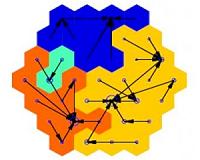| . |  |
. |
Dundee, Scotland (UPI) Feb 2, 2011 Scottish researchers and police say a new technique has improved the ability to recover fingerprints from fabric. A technique known as vacuum metal deposition -- already used to detect fingerprint marks on smooth surfaces such as carrier bags, plastics and glass -- is being applied to soft surfaces like fabric, ScienceDaily.com reported Wednesday. "We take these fabrics, place them in a vacuum chamber, then heat up gold to evaporate it and spread a fine film over the fabric," Joanna Fraser, a forensic sciences researcher at the University of Abertay Dundee, said. "We then heat up zinc, which attaches to the gold where there are no fingerprint residues. This helps reveal the fingerprint -- where contact has been made we see the original fabric, where there was no contact we're left with the gray color of the metal film." The technique is " like a photographic negative, where colors show up as their opposites," she said. "Here the fingerprint ridges show through as clear fabric, but where there are no ridges we see the distinctive gray color of the metal." Scottish police officials say they are encouraged by the progress. "The research is still in its early stages but we are starting to see results," Paul Deacon, fingerprint unit manager at the Scottish Police Services Authority, said. "We have shown that fabrics with a high thread count are best for revealing a print and have recovered identifiable fingerprints on a number of fabrics including silk, nylon and polyester."
Share This Article With Planet Earth
Related Links All About Human Beings and How We Got To Be Here
 Mathematical Model Explains How Complex Societies Emerge And Collapse
Mathematical Model Explains How Complex Societies Emerge And CollapseBethesda MD (SPX) Jan 21, 2011 The instability of large, complex societies is a predictable phenomenon, according to a new mathematical model that explores the emergence of early human societies via warfare. Capturing hundreds of years of human history, the model reveals the dynamical nature of societies, which can be difficult to uncover in archaeological data. The research, led Sergey Gavrilets, associate director for ... read more |
|
| The content herein, unless otherwise known to be public domain, are Copyright 1995-2010 - SpaceDaily. AFP and UPI Wire Stories are copyright Agence France-Presse and United Press International. ESA Portal Reports are copyright European Space Agency. All NASA sourced material is public domain. Additional copyrights may apply in whole or part to other bona fide parties. Advertising does not imply endorsement,agreement or approval of any opinions, statements or information provided by SpaceDaily on any Web page published or hosted by SpaceDaily. Privacy Statement |